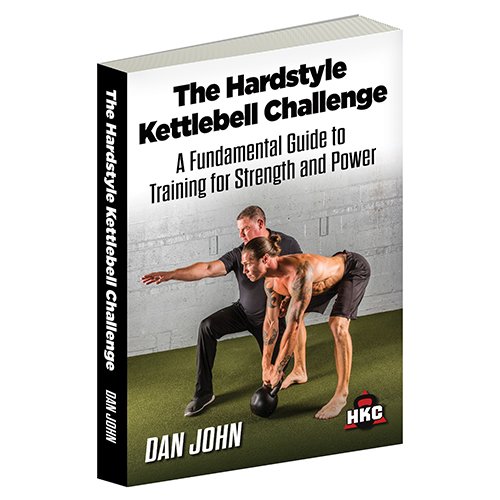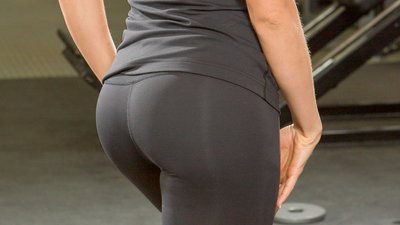I often joke to my audience that they're "sitting on a goldmine." The glutes might be the most important muscles in the body, but until recently, many people have ignored them. The glutes are the foundation of power and the fountain of youth. Healthy glutes show the world you are young, vibrant, and virile.
This isn't hyperbole: There is a wonderful scene in "Sex and the City" where a very wealthy man, with a lot of Viagra, loses the girl because of his saggy bottom. Droopy butt cheeks denote weakness, illness, and injury. The inability to tightly flex the glutes has become so common that Stu McGill, Ph.D., professor emeritus of spine biomechanics at the University of Waterloo and chief scientific officer at Backfitpro Inc., has come up with a great term for this condition: gluteal amnesia.
Are your glutes awake or dead-ass asleep?
The inability to hold one's beltline at a position parallel to the floor is the first sign of gluteal amnesia. I first heard about this concept decades ago in the work of Laurence Morehouse and Leonard Gross. In their books—especially "Total Fitness" and "Maximum Performance"—they made a small point about how one woman effortlessly glides across the campus. Her beltline is parallel to the ground as she moves. The authors point out that most people allow their beltlines to angle downward.
The cure is to squeeze the butt cheeks. Stand and try to give yourself a flat beltline by squeezing your cheeks together—hard. If the fronts of your hips begin to complain with the stretch, you might have gluteal amnesia. If you can't figure out how to squeeze your cheeks at all, you might have a nice case of gluteal amnesia.
Imagine that the pelvis is a bowl with water in it. You want to keep from pouring or dripping water out of this bowl. Most Americans are pouring water out of the front. If you think of the rib cage as a box, you want to keep the "box" on the "bowl." If the bowl is calm and quiet, the box can happily sit on it for generations. But, if you tilt the bowl forward, something else will have to work overtime. This often leads to back issues, tight hip flexors, and the dreaded pooched belly.
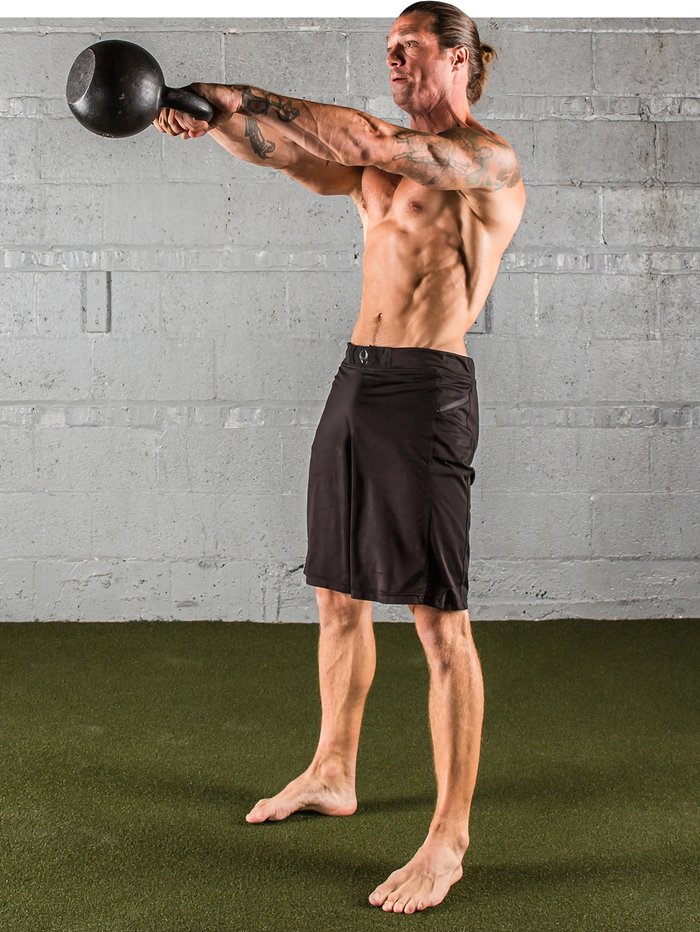
At the top of a kettlebell swing and the top of a goblet squat, your belt should also be parallel with the floor. Yes, coaching can be that simple.
In total honesty, I have been there. Years ago, my necrotic left hip was slowly destroying my ability to walk, train, and live. Weeks before a total hip replacement, I noticed an odd thing: I couldn't squeeze my left butt cheek. I couldn't even find it.
Mike Warren Brown, the director of programming at my gym, spends most of his time working with elderly clients. Training older clients is a window into the entire population. Some of us are aging well, and some of us are not.
Mike has a simple drill for "finding" the glutes:
- Lay on the floor. Some elderly clients will have difficulty just getting to the floor, and it will highlight their issues with age and disuse.
- Slip your hands under your butt cheeks (cue the usual joke, "I said your butt cheeks") and consciously squeeze the left and right glutes into your hands.
This may seem like an exercise for just for geriatric patients,. Bbut, if you feel a cramp in either hamstring during a hip thrust or any other member of the glute -training exercise family, to channel Jeff Foxworthy, "You might just have glute amnesia."
Better living through hip thrusts
Back in the 1980s, we did "pelvic tilts" at the Olympic Training Center and I thought they looked stupid. As it so often happens, I walked away from one of the best exercises ever invented for overall athletic improvement, and teaching how to use the glutes. We refer to these as hip thrusts today, and we can all thank Bret Contreras for making them part of the general training discussion.
I teach hip thrusts with the thumbs driving into the ground. This position is the same as the top of a kettlebell swing, but performed on the ground. The reason I teach this movement this way, is to make sure it is not done with the shoulders rounded forward in the "staring at the computer screen" position. I want the shoulders back and packed, and this little tweak helps a lot.

The hip thrust can be done with body weight, bands, kettlebells, or barbells. I have Bret's hip thrust machine and it is an excellent tool, but you can certainly work with what you have. The hip thrust is the start of our gym's famous "buns and guns" workout.
Quick point: Like most strength coaches, I have rarely worried about programming arm work or bench presses for my male athletes, or abdominal work for my female athletes, as they tend to be happy to train those on their own time.
But, since the "buns" part of this workout is so intense, we added some biceps and triceps work at the end as a bit of dessert. And, it works.
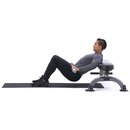
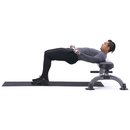

BodyFit
$6.99/month- 2,500+ expert-created single workouts
- 3,500+ how-to exercise videos
- Detailed workout instruction
- Step-by-step workout tips
- Training at gym or at home
- Access to Workout Plans
- Access to Bodyfit App
- Store Discounts
Already have a Bodybuilding.com account with BodyFit? Sign In

What comes with BodyFit?

- Instructional Videos
Don't risk doing a workout improperly! Avoid injury and keep your form in check with in-depth instructional videos.

- How-to Images
View our enormous library of workout photos and see exactly how each exercise should be done before you give it a shot.

- Step-by-Step Instructions
Quickly read through our step-by-step directions to ensure you're doing each workout correctly the first time, every time.
Essential technique notes
Mike Warren Brown added a key point for every glute-focused workout: hip flexor stretches. The rest periods between each movement should consist of a variety of hip flexor stretches. His argument—and the great physiotherapist Vladimir Janda would agree—is that the hip flexors pull the pelvic bowl forward as our bodies become more comma-shaped from constantly sitting.
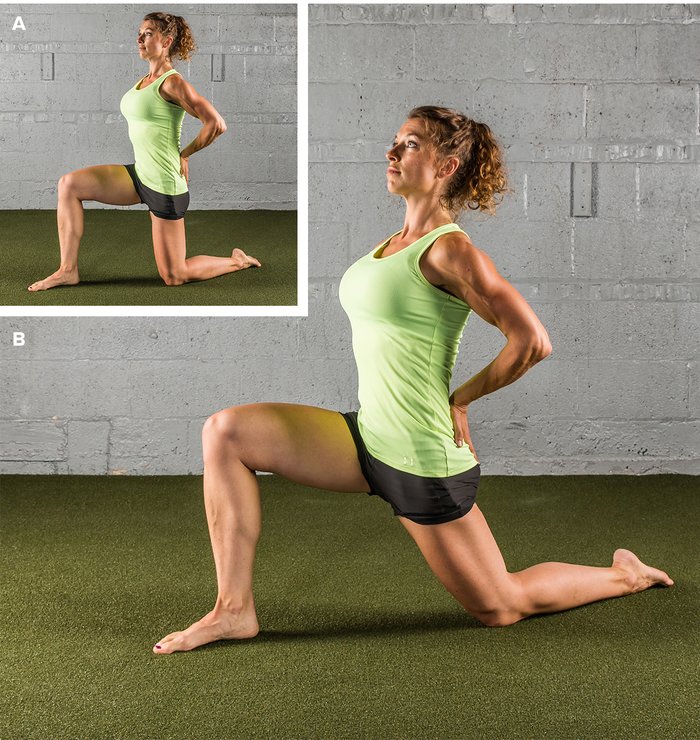
Glute work actively pries on the hip flexors, so give them the chance to really unlock during the rest/stretching periods. It isn't unusual to hear people say that their backs feel much better after buns and hip flexor stretches. Getting "the box on the bowl" releases the stresses on the back.
During the mini-band walks, keep side-stepping and reaching as far as you can with the lead foot. It also helps to go "heel first" as you push sideways: the lead heel leads the whole body. A delicious cramping feeling in the outside upper glutes indicates when you are indeed working the right area.
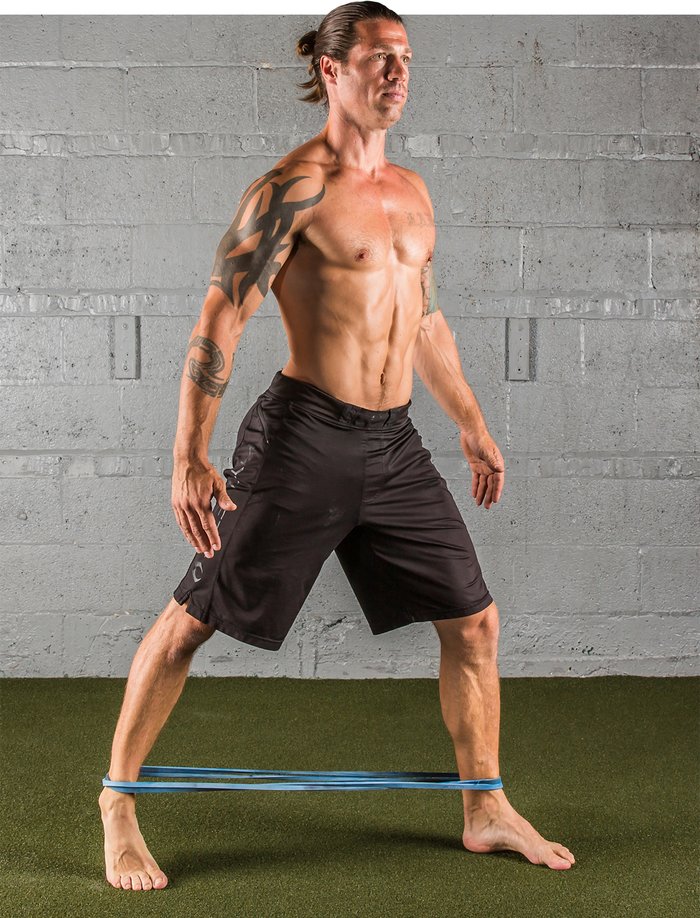
The devil is in the details, but goblet squats make for an easier workout than double kettlebell front squats. In this workout, the squat is the exercise that tends to cascade pain and anguish into the other moves. Using the thighs to push the tired glutes along is certainly nothing new, but this workout seems to be a one-stop shop for glutes and gluteal amnesia.
While it is possible to do this combination for up to four rounds, most people generally find that two rounds is repeatable and doable week-in and week-out. This workout can be done twice a week as part of a general training program. Oddly, it doesn't take very much time. Strive to move from exercise to exercise as quickly as you can.
Your athletic future is that thing right behind you!
I'm a strength coach, so my approach to gluteal amnesia is lifting and stretching. My answer to many things is lifting and some stretching. Some people, and some clients, may have issues that need surgical intervention or specific therapies. But, for most people, focusing on training the glutes—hard—will be the single greatest thing they can do to improve all conditions and qualities, including elite performance.
Finally, because I know someone will ask, the "guns" part of the "buns and guns" program is simple: just 2-4 supersets of curls and triceps work to build those "arm-acondas."
Keep on lifting and learning.
